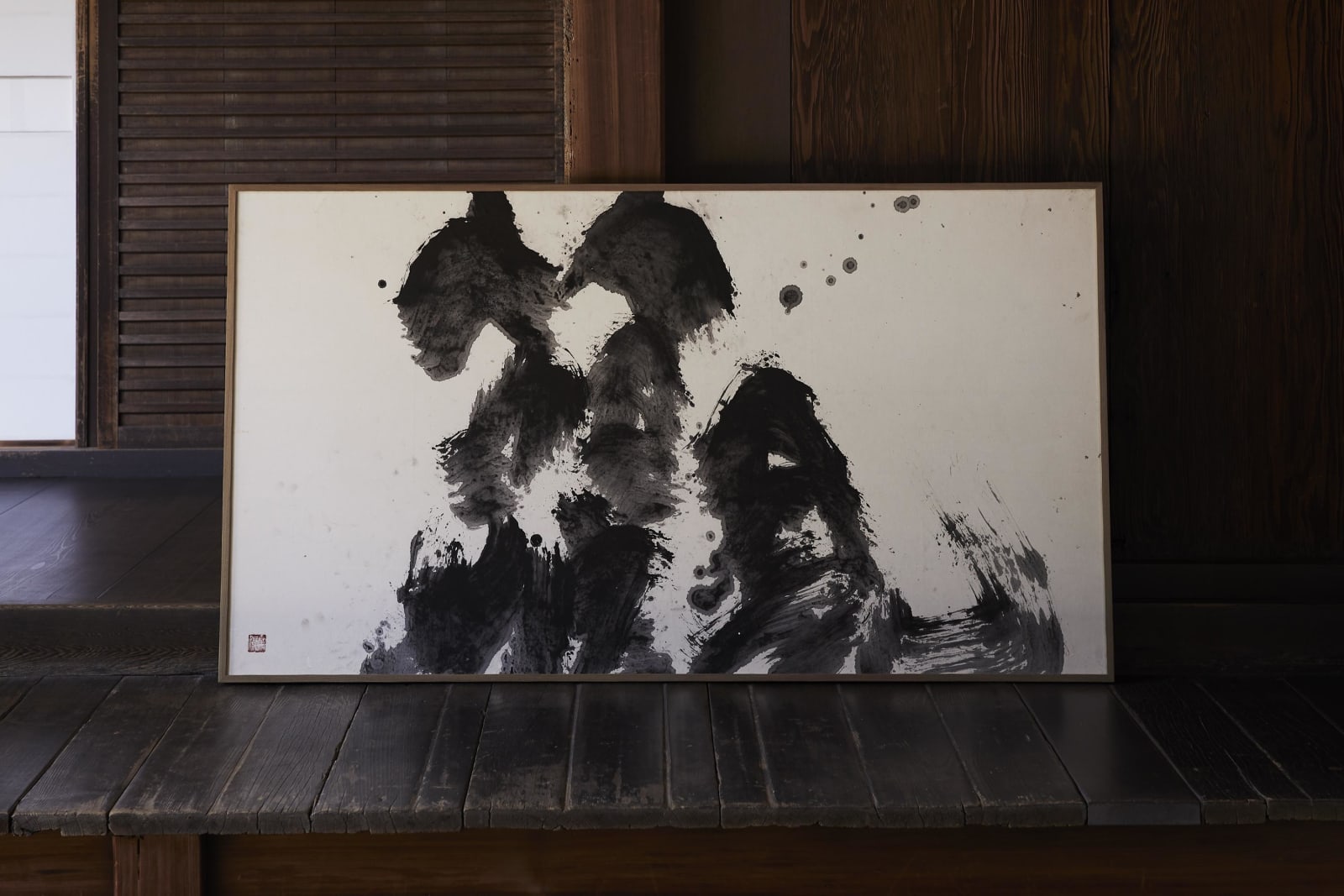Ueda Sōkyū (1899−1968)
Kan (insight)
Ink on paper, framed
Seal: Sokyu
68.5 x 123.5 cm
70.5 x 125.5 cm (overall)
Further images
Ai (love), a submission to the seventh Nitten Exhibition in 1951 which gave rise to a scandal in Japanese art scene, was Ueda Sokyu’s first step challenging toward avant-garde calligraphy. Prior to the readability, it is the three-dimensionality of space and time on the paper through de- and re-constructing the character, the various applications of ink, and the use of different kinds of brush, that Sokyu aimed at since then. He even made use of color into his work, self-titled saisho (colored calligraphy) in his later years, creating diverse body of works throughout his artistic life. What is more, Sokyu, as a leading figure of Keisei-kai, aggressively promoted and displayed their works overseas.
The present work was included in a film, which documented the live performance of avant-garde calligraphers such as Hidai Nankoku, Morita Shiryu, Inoue Yuichi, other two Bokujin-kai members, and Sokyu himself; also, the contents show this moving image might be made in 1962 or 63. In the film, the process of the writing by Sokyu demonstrated his attempt to encapsulate time in the form of character which was learned from the evacuation life during 1945-48. Interestingly, along with Nankoku and the members of Bokujin-kai, Sokyu was about to journey to Europe for the touring exhibition “Schrift und Bild” (calligraphy and image) in 1963. The works appeared in the film and the film itself are presumed to be made for the European audience with such intention.
Ueda Sokyu (calligrapher, 1900−1968)
Also Known as Jun; Osahiro; Kinkoku, etc.
Hyogo-born calligrapher. Studied calligraphy under Ibara Ungai and Hidai Tenrai. Initiated Shodo Geijutsu-sha and edited its magazine. Founded Keisei-kai and led the movement of Japanese avant-garde calligraphy in the postwar era. Representative of Keisei-Kai. Nitten and Mainichi Shodo Exhibition juror.
The present work was included in a film, which documented the live performance of avant-garde calligraphers such as Hidai Nankoku, Morita Shiryu, Inoue Yuichi, other two Bokujin-kai members, and Sokyu himself; also, the contents show this moving image might be made in 1962 or 63. In the film, the process of the writing by Sokyu demonstrated his attempt to encapsulate time in the form of character which was learned from the evacuation life during 1945-48. Interestingly, along with Nankoku and the members of Bokujin-kai, Sokyu was about to journey to Europe for the touring exhibition “Schrift und Bild” (calligraphy and image) in 1963. The works appeared in the film and the film itself are presumed to be made for the European audience with such intention.
Ueda Sokyu (calligrapher, 1900−1968)
Also Known as Jun; Osahiro; Kinkoku, etc.
Hyogo-born calligrapher. Studied calligraphy under Ibara Ungai and Hidai Tenrai. Initiated Shodo Geijutsu-sha and edited its magazine. Founded Keisei-kai and led the movement of Japanese avant-garde calligraphy in the postwar era. Representative of Keisei-Kai. Nitten and Mainichi Shodo Exhibition juror.





